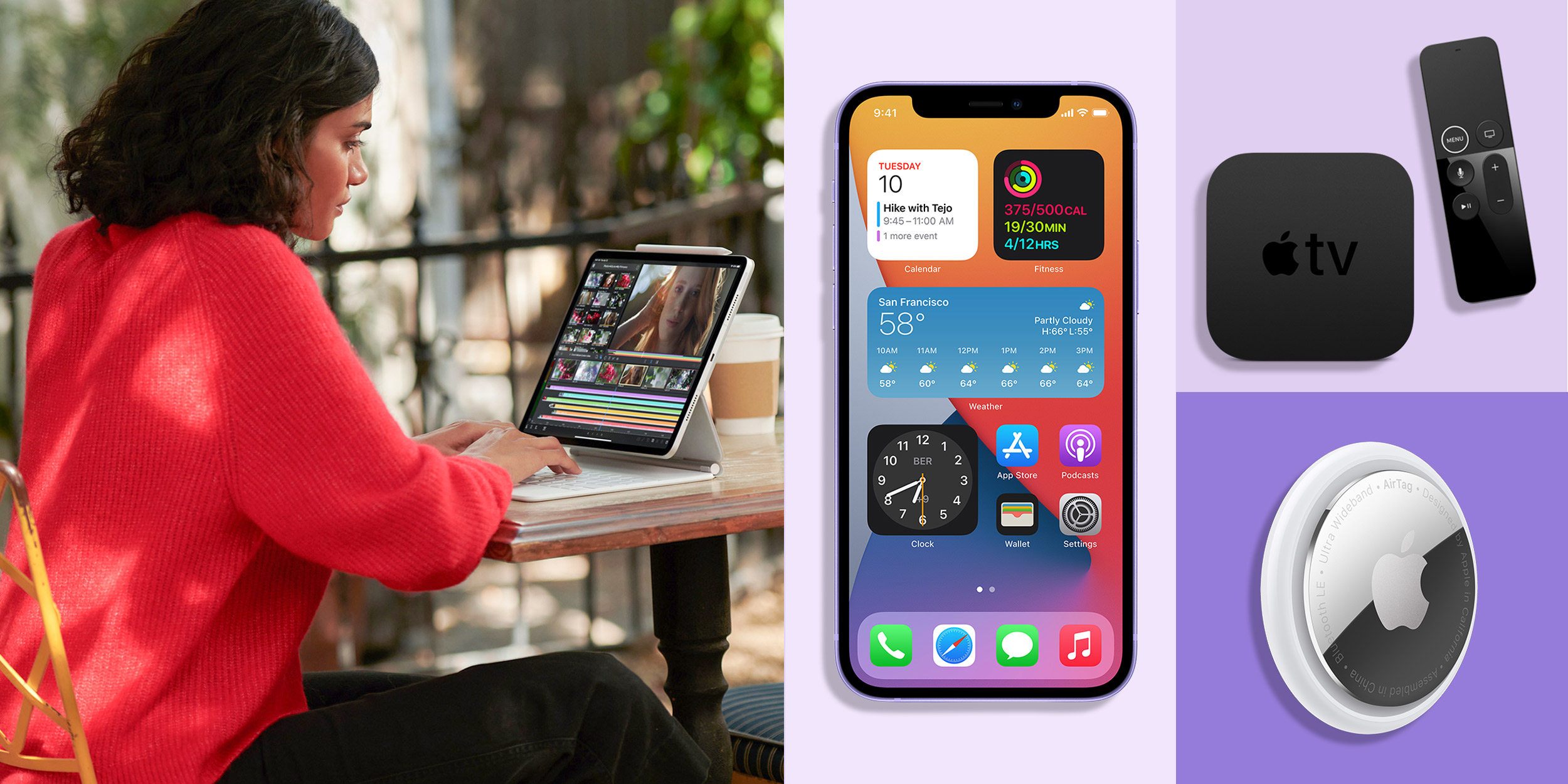
The iOS 15 and iPadOS 15 Release Candidate versions are already available, and the updates will be available to the entire public on Monday. Here’s whether you should update your iPhone or iPad after three months of previewing Apple’s next OS systems.
What’s new in iOS 15 and iOS 15 for iPad?
There was a lot of anticipation for iOS 15 this year after the viral rollout of iOS 14/iPadOS 14 thanks to the addition of widgets, but development issues were worsened by the ongoing COVID-19 pandemic.
The themes of iOS 15 and iPadOS 15 are centered on a pandemic world, as well as preparing people all around the world to return to their daily routines. Users will get a new Focus mode, as well as updated Safari, Weather, and FaceTime applications, among other things, with this update. iPhone 11 and newer owners will be able to track their phones even when they are switched off.
There are new multitasking changes for iPadOS 15 users, including the option to add widgets to the Home screen, as well as the new App Library and the ability to use the Split View and Slide Over capabilities.
Focus mode and improvements to the home screen
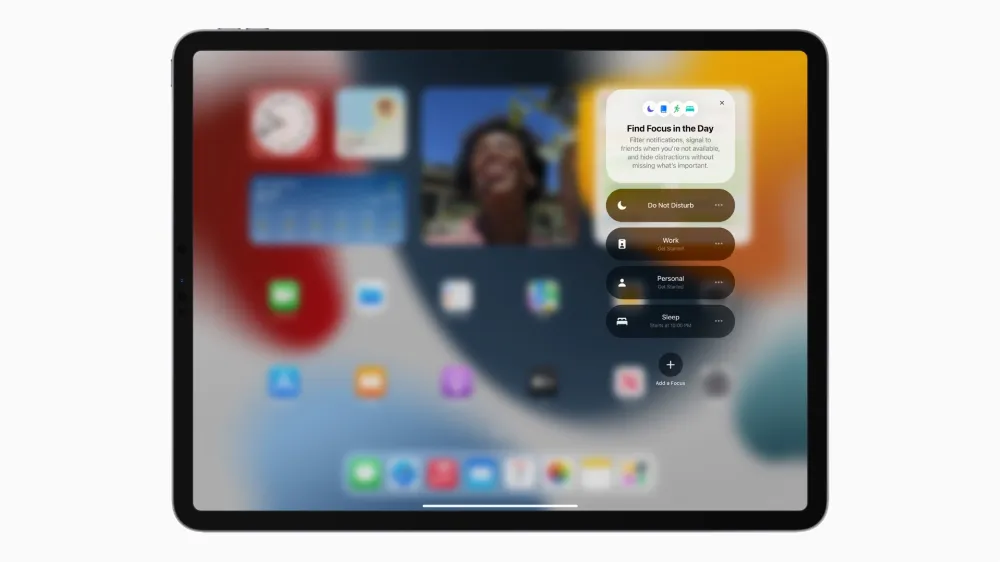
The change that Apple offered to the iPhone with iOS 14: a redesigned and more configurable Home screen, has now arrived on iPadOS 15. You can now add widgets to any location on your Home screen, uninstall apps and only show them in the App Library, and personalize what’s displayed based on the Focus mode you create.
Apple also improved the Split Screen and Slide Over capabilities easier to use in iPadOS 15. Every time you start an app, you’ll now see three dots at the top of the screen where you may choose whether or not to have multiple apps open at the same time.
For me, the new multitasking features in iPadOS 15 have proven to be really handy. Remember when Apple discontinued 3D Touch because no one could figure out how to use it? Split View and Slide Over were also not always intuitive. Users will now be able to easily open and split the screen with other programs thanks to the three dots indicator.

FaceTime, Safari and Weather have a new appearance Apple Maps
Focus mode is one of the most significant enhancements in iOS 15 and iPad OS 15, since it allows you to choose what you want to focus on depending on what you’re doing at the time, such as working, sleeping, having personal time, playing games, or doing out.
When I’m not at home and don’t want to be disturbed, I use six different concentration modes: “Do Not Disturb,” “Personal,” “Work,” “Sleep,” “Fitness,” and “Street.” The iOS 15 Focus feature is already learning my habits and turning on one focus setting after another, beta after beta. It’s incredible.

Well-known apps also have a fresh look. FaceTime looks square but adds a new portrait setting to flatten your call background. There is also a new Voice Isolation feature, an improved FaceTime Group grid display, and individuals can join a web or Android discussion with a nice FaceTime link.
It is vital to remark how good these new mic modes are: if you wear an AirPods, picking a voice isolation mode is ground-breaking because you can wash or talk to someone loudly, but you won’t hear anything apart from your voice at the other side. This feature is pretty outstanding in the implementation of Apple.
The Weather app has a new icon, and the moving backdrops make things look more realistic. There are also next-hour precipitation notifications, which alert you when rain, snow, hail, or sleet is about to begin or end. Apple’s team has invested a lot of time and attention into the app, and it looks great.
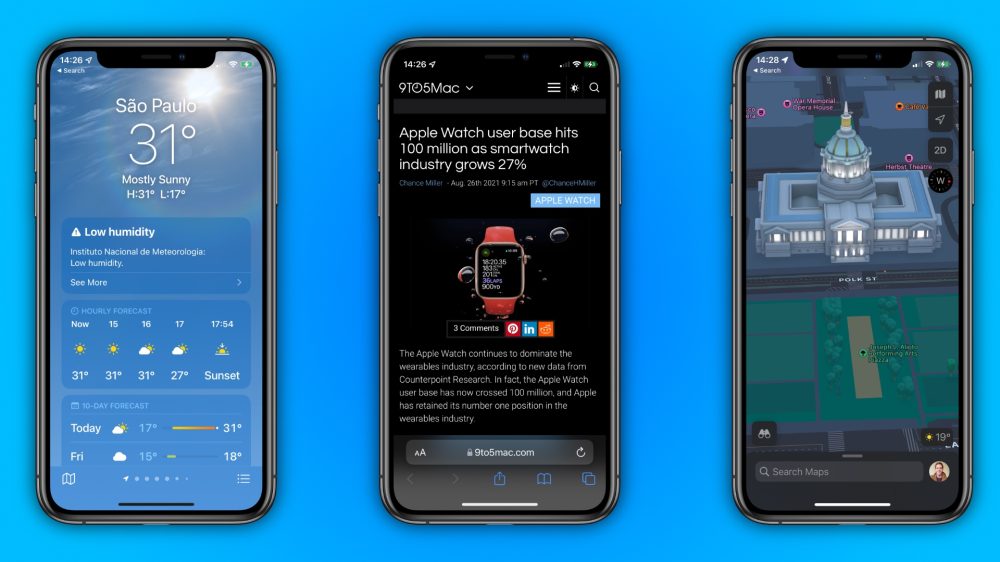
After all of the uproar during the test, Safari now has a new look. While the design has caused some controversy, I believe it will just take time for people to adjust to it. You may have a “Compact Tab Bar” with iPadOS 15, which looks excellent. If you don’t like what you see, you can always go back to the classic design, which you can learn how to do here.
Finally, Apple Maps offers some great new maps for certain cities. Elevation, roads, trees, buildings, landmarks, and more are all meticulously detailed in San Francisco, Los Angeles, New York, and London. New driving features, an interactive globe, new place cards, and more are available to users.
The sharing of iOS 15 and iPadOS 15more is important.

Some apps, like Music, Podcast, Safari, TV, iMessage, and Photos, have a distinct “Shared With You” section in iOS 15 and iPadOS 15. When you get a message in Messages, you’ll receive a reminder in these applications to read, watch, or listen to what was given to you.
If you click on the person’s name, iOS 15 will take you to their iMessage chat, where you can respond. Isn’t it lovely? And no matter how long you spend watching, reading, or listening to something someone sent you, you will be redirected to the exact instant the person sent you the link.
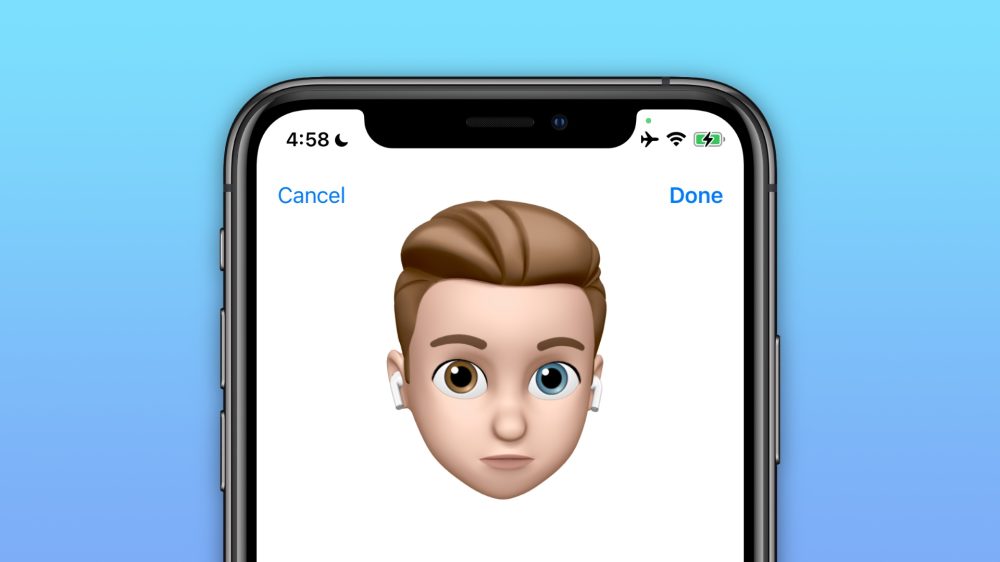
New Memoji customizations for iMessage include outfits, more colors, and accessibility adjustments such as hearing implants, oxygen tubes, and soft helmets. Even though it’s quite basic, I enjoy upgrading my Memoji from time to time and am always excited to try out new customizations.
Also, with iOS 15 and iPadOS 15, when you send a group of photographs via iMessage, they look more compact with a collage that you can swipe through and tap to view them all in a grid or add a fast Tapback. Finally, Apple was able to resolve the issue.
Siri and Live Text

Another significant feature for iOS 15 and iPadOS 15 is Live Text. When you open an image or your camera, you can find text and use it to make a call, send an email, or search up directions by tapping on the highlighted text.
It’s simple to use and really useful, as everything is now clickable. If you notice a sign on the street, for example, simply open your Camera app and click on the text to copy it.
Users can also copy the image’s content and translate it into English, Chinese, French, Italian, German, Portuguese, and Spanish using Live Text translation.
Siri has also become a little wiser and more useful, thanks to the addition of on-device speech recognition, which means that everything is processed on your iPhone and iPad. Siri can now execute a variety of functions without the need for an internet connection. You won’t have to worry about asking Siri to open an app and getting a response like “We can’t open the Music app since you don’t have an internet connection right now.”
iOS 15 and iPadOS 15: a slew of new features

As you can see from the list above, there are a lot of reasons to be excited about iOS 15 and iPadOS 15, but there are also a lot of other enhancements coming to these operating systems later this year – or perhaps next year.
In the WWDC 2021 keynote, Apple made a big deal about SharePlay. This function allows users to FaceTime with others to share a song, video, or even the device’s screen. It was available in early iOS 15 betas. But Apple eventually removed it, claiming that it would introduce back later. Filipe Espósito of 9to5Mac and I were able to test it for a short time, and it was a lot of fun while it worked.
ID card support in Wallet, which would allow US users to scan their ID into the Wallet app, is also not available with iOS 15. Apple has, however, announce which states in the United States will be the first to use the new function once it is released.
Features like App Privacy Reports, detailed 3D navigation in CarPlay, and Legacy Contacts will take a little longer to arrive on iOS 15 and iPadOS 15.
What became of Universal Control?

In the beta version of iPadOS 15 and MacOS Monterey never was Universal Control which Apple claimed to allow users to use Mac’s keyboard and mouse with a nearby iPad and vice versa.
Apple describes this feature as follows:
A single keyboard, mouse, or trackpad can now connect to both your Mac and your iPad, and they can even connect to multiple devices at once. Drag your pointer from your Mac to your iPad, type on your Mac, and the text appears on your iPad.
Even yet, Universal Control will take longer because macOS Monterey will not be available with iOS 15 or iPadOS 15. If Apple follows the same path as last year, Monterey should arrive within the next few months.
Is it worthwhile to upgrade to iOS 15?
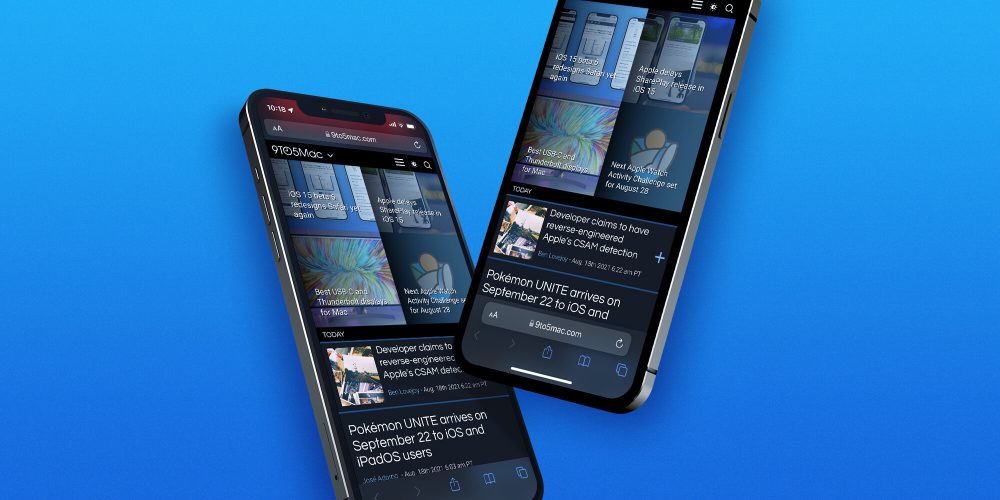
iOS 15 isn’t a major overhaul of the iPhone operating system, but it does include several useful features and enhancements to the user experience. It’s a major deal for me to be able to switch between Focus settings and track my iPhone even when it’s switched off.
However, if you don’t want to upgrade to iOS 15, Apple has said that it will continue to support iOS 14 so that users don’t miss out on security and bug updates even if they don’t install Apple’s newest operating system.
It’s also worth mentioning that Apple is offering iCloud+ with iOS 15: you can have iCloud Private Relay, email encryption, and limitless HomeKit Secure Video cameras without paying more.
Is it worthwhile to upgrade to iPadOS 15?
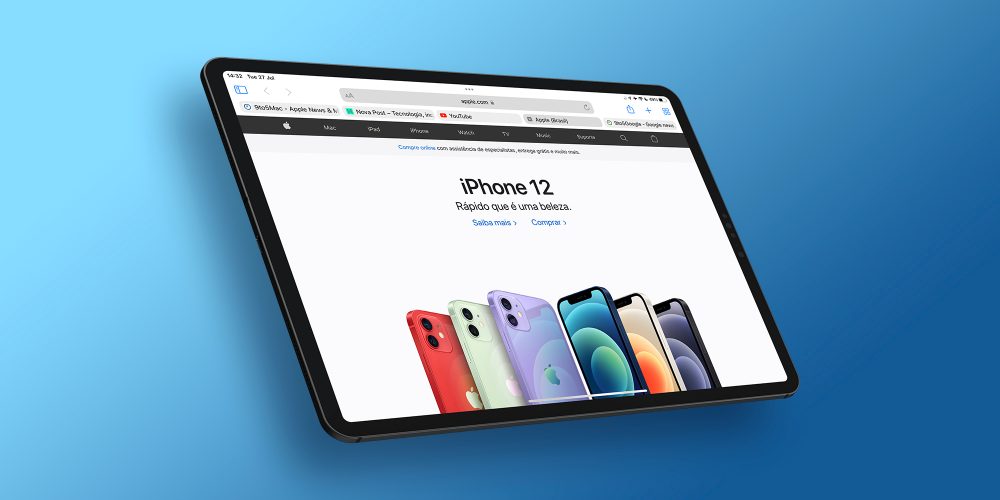
After Apple introduced the M1 iPad Pro, many people had higher aspirations for this year’s software upgrades. iPadOS 15 finally provides a revamped Home screen with widgets, but after Apple announced the M1 iPad Pro, many people had higher hopes for this year’s software improvements.
While Split Screen and Slide Over are simple to use, and new keyboard shortcuts are available, Apple did not provide iPadOS the entire overhaul that some users had hoped for.
Apple will only give developers another version of Swift Playgrounds where they may construct an app and send it to Apple to publish on the App Store. Professional programs like Final Cut Pro and Xcode are no longer available.
Apple appears to be holding off on the next big step despite the M1 iPad Pro’s power and fancy features. Perhaps next year.
When will this come out, and with what devices is it going to work?
On September 20, Apple will release iOS 15 and iPadOS 15. The following are all of the iPhone and iPod touch models that iOS 15 supports:
- iPhone 6s and 6s Plus
- iPhone SE (1st gen)
- iPhone 7 and 7 Plus
- iPhone 8 and 8 Plus
- iPhone X
- iPhone XR
- iPhone XS and XS Max
- iPhone 11
- iPhone 11 Pro and 11 Pro Max
- iPhone 12 mini and iPhone 12
- iPhone 12 Pro and iPhone 12 Pro Max
- iPhone SE (2nd gen)
- iPod touch (7th gen)
The following is a complete list of iPads that are compatible with iPadOS 15:
- iPad Pro 12.9 (5th gen);
- iPad Pro 11 (3rd gen);
- iPad Pro 12.9 (4th gen);
- iPad Pro 11 (2nd gen);
- iPad Pro 12.9 (3rd gen);
- iPad Pro 11 (1st gen);
- iPad Pro 12.9 (2nd gen);
- iPad Pro 10.5 (2nd gen);
- iPad Pro 12.9 (1st gen)
- iPad Pro 9.7 (1st gen)
- iPad Air (4th gen);
- iPad Air (3rd gen);
- iPad Air (2nd gen);
- iPad Mini (5th gen);
- iPad Mini (4th gen)
- iPad (8th gen);
- iPad (7th gen);
- iPad (6th gen);
- iPad (5th gen).
Final thoughts

Even if iOS 15 and iPadOS 15 are minor updates, there are plenty of new features to look forward to, even if some of them will take some time to arrive on your iPhone and iPad.
Along with the option of not updating your device, one of the most impressive features is that Apple continues to support the iPhone 6s and iPad Air 2. Of course, certain capabilities will be unavailable, but you may still update your 5-year-old phone or tablet with Apple’s most recent features.
Are you looking forward to iOS 15 and iPadOS 15? Will you provide an update? Leave your comments in the comment section below.